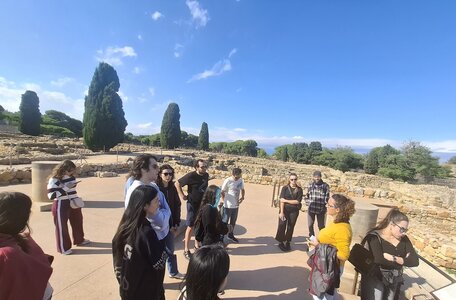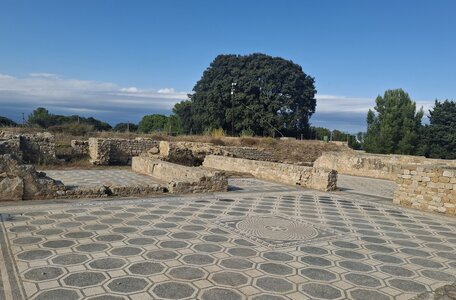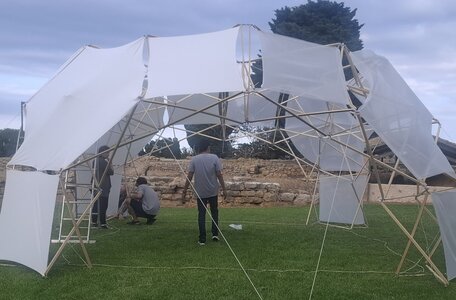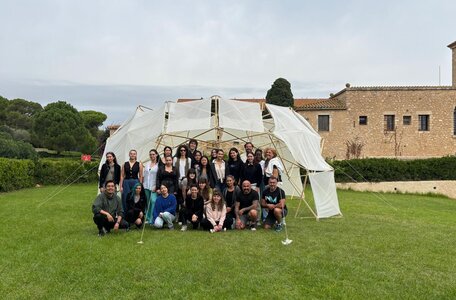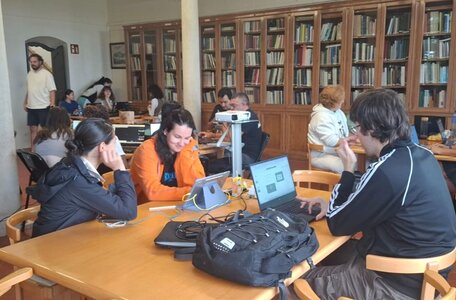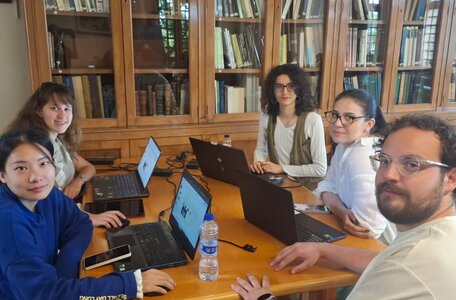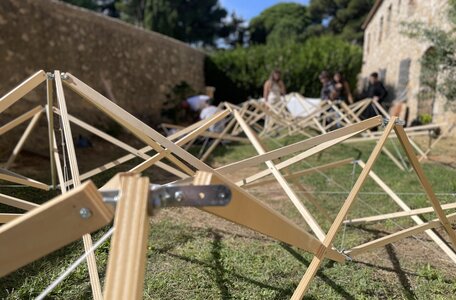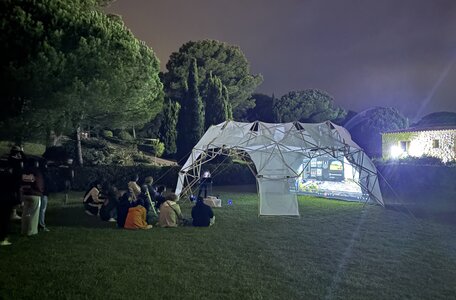At the end of September, shortly before the end of the academic year, a group of students and professors from UAUIM participated in the international workshop "Videomapping and Heritage", organized by the prestigious Escuela Tecnica Superior de Arquitectura de Barcelona, in partnership with UAUIM. This collaboration is part of a larger program, launched in early 2024, conceived as a project of cooperation between the Department of Architectural Representation at ETSAB and the Department of Study of Form and Ambience from the UAUIM. Within the framework of this collaboration, five joint projects have been carried out so far, generated by ETSA Barcelona:
1st Workshop of AI in Architecture, with the participation of 3 architecture schools from Mexico – February-March 2024 – online event
2nd Workshop of AI in Architecture, with the participation of 3 architecture schools from Mexico – May 2025 – online event
(UAUIM students participating in these two workshops benefited from the space of the Mac Popescu Experimental Workshop within UAUIM)
Videomapping and Heritage – The Wine Road to the Costa Brava (8th edition), April 2024 – event hosted by the Archaeological Museum of Empuries
Parametric design of geometric structure, September 2024 – event hosted by the Archaeological Museum of Empuries
The present event, the 9th edition of the “Videomapping and Heritage” workshop series, had as theme Greco-Roman Mythology and combined the parametric construction technique with the Videomapping media technique, practically making a synthesis of the last two types of activities carried out on the archaeological site of Empuries (Costa Brava), an exceptional natural and historical setting.
The students responded enthusiastically to the requirement to combine the legends of mythology, told with digital tools, with the archaeological framework and parametric architecture, the show offered by the vision of the 5 participating teams being ultimately a result achieved in matter and light of 5 keys to understanding a profound cultural vision linked to the roots of the Greco-Latin world. What we present in the attached synthetic materials is only the concept (director's script) of some animation and film visions that cannot be fully included here, but which created a unique atmosphere on the thousand-year-old archaeological site of Empuries:
1. Bacchus (Dionyssos) – a project by Giulia Andronache (UAUIM), Diana Grigorescu (UAUIM), Jon Etxalar (ETSAB). The project investigates the valences of the Dionysian cult from antiquity to the present day, highlighting the fact that the Greco-Latin way of understanding the party and the gesture of celebrating remains practically intact to this day, defining a fundamental feature of the structure of European society: to find freedom in celebration.
Team 1.pdf
2. The Myth of Iphigenia – a project by Jia Ni (ETSAB), Georgia Mihalache (UAUIM), Ștefania Nedelea (UAUIM), Alexandra Nikolaeva (ETSAB). The project presents the sacrifice of Iphigenia, the child sacrificed by her own father Agamemnon to the goddess Artemis. The project is based on the in-depth study of numerous historical images, some of which come from the museum of the archaeological site itself (mosaics, sculptures, decorative motifs, etc.)
Team 2.pdf
3. Dancing at Empuries/ Dansând la Empuries – a project by Yao Wang (ETSAB), Alisa Popova (ETSAB), Daiana Vasile (UAUIM), Pau Butiñá (ETSAB), and Sarah Iordan (UAUIM). The project explores the intersection between the heritage of ancient culture and contemporary digital means of narrative in the context of one of the most important archaeological sites in Spain. The students primarily wanted to highlight their personal experience of discovering an exceptional place, as well as the techniques to highlight it through contemporary means of digital expression.
Team 3.pdf
4. The Myth of Asclepius – a project by Ona Niubó (ETSAB), Reyna Cecilia Vargas (ETSAB), Antonia Zaharia (UAUIM), Sofia Zúñiga (ETSAB). The project narrates through digital means the myth of the god Asclepius (Aesculapius), the god of medicine, the main protector of the city of Empuries. Historically, medicine was highly valued in this thousands-year-old port, where various diseases were brought by sea from many countries and continents. The snake of Asclepius is present in various contexts on the archaeological site (inscriptions, sculptures) as a symbol of healing.
Team 4.pdf
5. Demetra. An animated story – a project by Júlia Espel (ETSAB), Rautia Abner (ETSAB) and Lucía Moratalla (ETSAB). The project presents the story of the goddess Demetra (Ceres to the Romans), goddess of agriculture, grain and fertility, and the connection with her daughter, Persephone, who became the wife of Hades, whose move to the underworld generated the appearance of the seasons on Earth. The project stands out by adopting an animation technique specific to children's storytelling, making the message simple, easy to convey and understand.
Team 5.pdf
In a record time of just two days, the students participating in the workshop managed to understand an exceptional archaeological site, both from an architectural and constructive point of view, as well as from the point of view of its intangible heritage, its wealth of legends and traditions, which transforms the Empuries 2025 event - Videomapping and Heritage - into an unforgettable community experience. In this way, the academic collaboration between two prestigious European schools continued happily: Escola Tecnica Superior de Arquitectura de Barcelona and UAUIM, Bucharest. The 19 participating students were guided by the professors:
Isidro Navarro Delgado, Omar Avellaneda López, Janina Puig Costa, Marilena Cristodolou, Sara Fort Rabassa from the ETSAB and Elena-Codina Dușoiu and Claudiu Tudoran from the Department Study of Form and Ambience, UAUIM.
Special thanks to the Empuries Archaeological Museum for hosting and logistics!
A text by: Elena-Codina Dușoiu, Assoc.Prof.Ph.D.Arch.
Further details: https://www.canal10.cat/video/27038-alumnes-de-lupc-i-de-bucarest-creen-a-empuries-un-videomapping-sobre-mitologia
